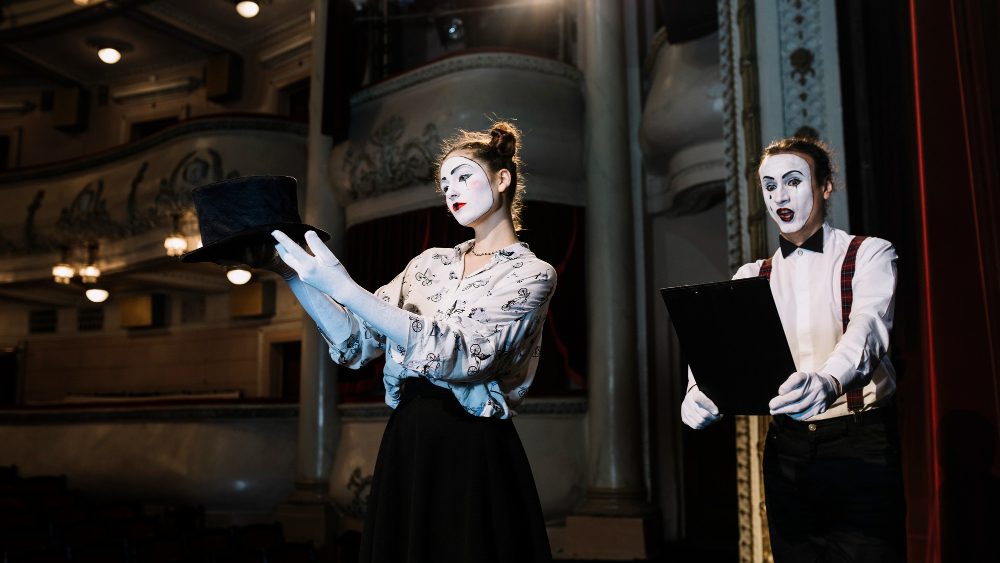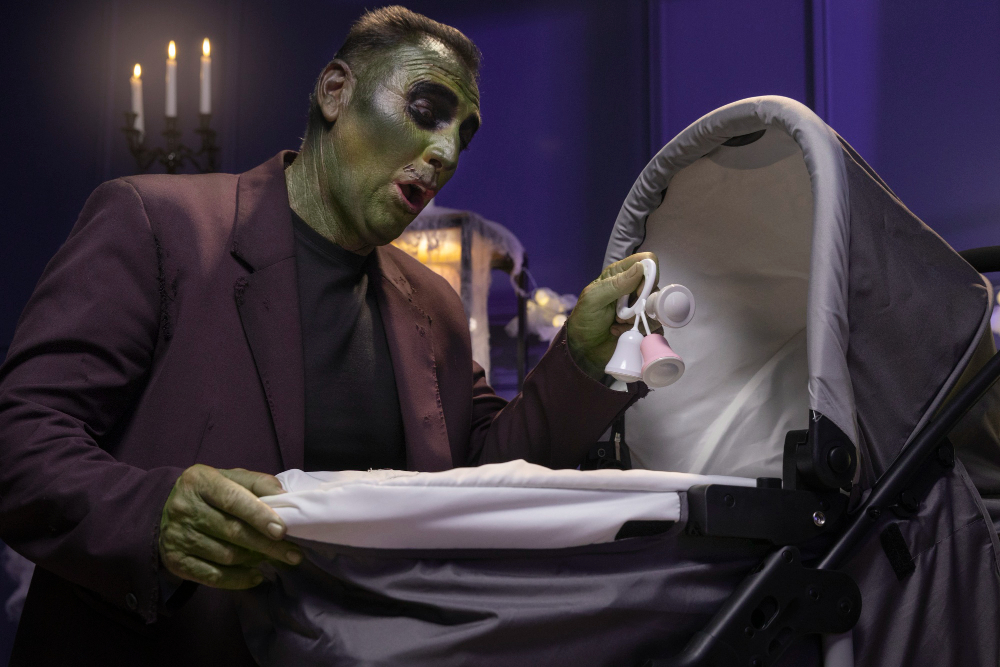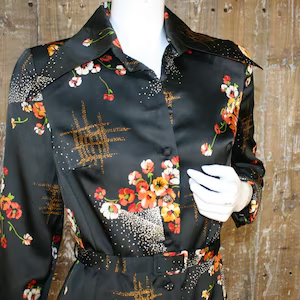The Phantom Of The Opera (2004 film): A Cinematic Masterpiece
“The Phantom Of The Opera (2004 film)” is an adaptation of Andrew Lloyd Webber’s acclaimed stage musical, which is itself based on the 1910 French novel “Le Fantôme de l’Opéra” by Gaston Leroux. Directed by Joel Schumacher, this film brings the haunting tale of love, obsession, and tragedy to the big screen, capturing the essence of the stage production while adding its cinematic flair. This article delves into the various aspects that make “The Phantom Of The Opera (2004 film)” a unique and unforgettable experience.
The Plot of The Phantom Of The Opera (2004 film)
“The Phantom Of The Opera (2004 film)” follows the story of a mysterious, disfigured musical genius known as the Phantom, who lives beneath the Paris Opera House. His love and obsession with Christine Daaé, a beautiful young soprano, drive the narrative. The Phantom mentors Christine, helping her rise to stardom, all the while hoping that she will fall in love with him. However, Christine’s heart belongs to her childhood friend, Raoul, the Vicomte de Chagny, leading to a dramatic and emotional love triangle.
As the film progresses, the Phantom’s jealousy and possessiveness intensify, resulting in a series of terrifying events that threaten the lives of everyone in the opera house. The film culminates in a poignant and tragic confrontation that reveals the depths of the Phantom’s anguish and the power of love and compassion.
Casting and Performances
One of the standout features of “The Phantom Of The Opera (2004 film)” is its casting. Gerard Butler takes on the role of the Phantom, bringing a raw intensity and vulnerability to the character. While Butler’s portrayal was met with mixed reviews, his performance is undeniably powerful, capturing the tortured soul of the Phantom.
Emmy Rossum stars as Christine Daaé, delivering a performance that is both ethereal and grounded. At just 18 years old during filming, Rossum’s voice and acting ability were praised, particularly for the emotional depth she brought to the character. Her chemistry with Butler is palpable, adding layers to the complex relationship between Christine and the Phantom.
Patrick Wilson plays Raoul, the film’s romantic hero. Wilson’s portrayal of Raoul is earnest and noble, providing a strong contrast to the Phantom’s darker, more tortured persona. The dynamic between Raoul, Christine, and the Phantom is central to the film’s emotional impact, and Wilson’s performance plays a crucial role in bringing this dynamic to life.
The Music: A Timeless Score
The music of “The Phantom Of The Opera (2004 film)” is one of its most defining elements. Composed by Andrew Lloyd Webber, the score features some of the most iconic songs in musical theater, including “The Music of the Night,” “All I Ask of You,” and “Masquerade.” The film stays true to the original stage production, with the orchestration and vocal performances capturing the grandeur and emotional depth of Webber’s compositions.
Gerard Butler’s performance as the Phantom was a departure from the operatic vocal style typically associated with the character. Instead, Butler brought a rock-inspired edge to the role, which, while controversial among purists, gave the film a distinct identity. Emmy Rossum’s pure, soprano voice provided a perfect counterbalance, particularly in duets like “The Point of No Return.”
The film’s musical numbers are beautifully staged, with elaborate sets and costumes enhancing the cinematic experience. The opera scenes, in particular, are a visual feast, capturing the opulence and spectacle of the Paris Opera House.
Visuals and Cinematography
Visually, “The Phantom Of The Opera (2004 film)” is a stunning achievement. Cinematographer John Mathieson created a rich, atmospheric aesthetic that mirrors the Gothic romance of the story. The film’s use of lighting, color, and shadow adds to the sense of mystery and foreboding that permeates the narrative.
The sets, designed by Anthony Pratt, are incredibly detailed, from the grand chandelier that plays a pivotal role in the story to the Phantom’s lair beneath the opera house. The attention to detail in the set design helps to transport the audience into the world of 19th-century Paris, making the film an immersive experience.
Costume designer Alexandra Byrne also deserves recognition for her work on the film. The costumes are lavish and period-appropriate, contributing to the film’s overall sense of authenticity. Christine’s costumes, in particular, reflect her character’s journey, from the innocent white dresses she wears early in the film to the more elaborate and mature costumes she dons as the story progresses.

The Themes: Love, Obsession, and Redemption
At its core, “The Phantom Of The Opera (2004 film)” is a story about love in its many forms. The Phantom’s love for Christine is intense and all-consuming, yet it is also possessive and destructive. His obsession with her blinds him to the reality that love cannot be forced or manipulated. Christine’s love for Raoul, on the other hand, is pure and selfless, representing the kind of love that the Phantom ultimately yearns for but believes he cannot attain.
The theme of redemption is also central to the film. The Phantom’s journey is one of self-discovery and acceptance, as he comes to realize that his actions, driven by his need for love and recognition, have caused immense pain. The final scenes of the film, where Christine shows the Phantom compassion and understanding, offer a glimmer of hope and redemption for the tortured character.
Critical Reception and Legacy
“The Phantom Of The Opera (2004 film)” received mixed reviews upon its release, with some critics praising its visual splendor and musical performances, while others criticized it for lacking the emotional depth of the stage production. However, the film has gained a dedicated following over the years and is often appreciated for its faithful adaptation of the musical and its unique take on the story.
The film was nominated for several awards, including three Academy Awards for Best Art Direction, Best Cinematography, and Best Original Song (“Learn to Be Lonely”). Although it did not win in any of these categories, the nominations are a testament to the film’s technical and artistic achievements.
Conclusion
“The Phantom Of The Opera (2004 film)” is a cinematic adaptation that stays true to the spirit of the original stage musical while adding its distinct visual and emotional layers. Its combination of powerful performances, iconic music, and stunning visuals make it a must-watch for fans of musical theater and cinema alike. Despite its mixed critical reception, the film continues to resonate with audiences and stands as a testament to the enduring appeal of Gaston Leroux’s timeless story.
As you revisit or discover “The Phantom Of The Opera (2004 film)” for the first time, it is clear that this adaptation offers a unique lens through which to experience the haunting beauty and tragedy of the Phantom’s tale.







